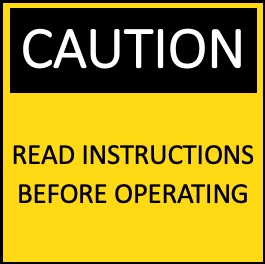By Dr. Ken Broda Bahm:

Whenever I am running a mock trial and playing the role of the judge, I read the instructions out loud to the mock jurors while they also read along using their own paper copies. I sometimes think that is overkill: If it were me, I think I would just listen or just read, but I wouldn’t need to read along with the judge. When I think that, however, it is my bias talking. Based on my work and my training, I am analytical, a bit overeducated, and have a lot of familiarity with the law. When I hear or read the instructions, I usually (not always) understand what they mean. When I use instructions in a mock trial, it typically isn’t the first time I’ve seen them. So I get it, and I don’t need the overkill.
All that is not true of most jurors or the mock jurors. In recent research, Janet Randall (2019) of Northeastern University, an academic who has worked with the Massachusetts bar association to propose plain English instructions, studied exactly what it takes to improve jurors’ understanding of instructions. Comparing comprehension in different settings, she found that when subjects read the instructions while also listening to them, and when instructions were written in plain English (e.g., minimizing passive voice and unfamiliar legal expressions), comprehension was significantly improved. In this post, I will focus on the ways that Dr. Randall identifies to improve understanding of jury instructions.
Keep It Simple
Dr. Randall’s article begins with the bad example of an instruction written like so: “Failure of recollection is common. Innocent misrecollection is not uncommon.” Lawyers, of course, can parse that without too much mental work. However, when California changed that instruction to, “People often forget things or make mistakes in what they remember,” it made the point much more clearly, especially for those who are not highly educated, highly analytical, or native speakers of English.
In general, the problems to avoid in drafting instructions include the overuse of negatives, nominalized verbs, passive voice, low-frequency or unfamiliar words, extended modifying phrases, and defining terms only after they have been used. Avoiding these problems and writing in “Plain English” helps the instructions fulfill their most fundamental role in conveying clear understanding.
Take Advantage of ‘Dual-Tracking’
Dr. Randall notes in her article that many states do not make it a practice to provide copies of the instructions to all jurors. Only two states (Arizona and Indiana) supply individual written versions in all jurisdictions. Lacking a copy, or having to share a single copy, makes it harder for jurors to engage with the instructions and to understand. Based on what is called, “dual processing theory,” jurors are likely to comprehend more accurately if they are engaged in the dual process of both listening and reading as the instructions are given, and Dr. Randall’s research confirmed that benefit.
Use Every Tool Available
Here’s a final thought experiment: If the only goal was for jurors to really understand and apply the jury instructions accurately, how would the process be different? The chances are very good that it would be much different. Maybe jurors would see PowerPoint slides as instructions are given, or maybe they would see a video. Most likely, the presentation would be interactive, with jurors asking questions and maybe giving feedback on their level of understanding. Of course, courts are conservative, and judges don’t like being overturned. That means that there is a gravitational pull toward keeping instructions as they are. So we probably won’t be seeing any of those reforms anytime soon. But for litigants who have influence in asking for instructions, and for the judges who decide what those instructions will be, use every tool that you can. That means not just making the instructions physically and linguistically accessible to the jurors by asking for individual copies and using plain English, but also by considering additional innovations like using schematic choice-trees when the jury’s process is highly conditional or involves a sequence of steps.
Because a trial by jury will be more predictable and more accurate in its results when jurors understand what the law expects of them, it is in the interests of everyone trying to save the jury to focus on better instructions.
Other Posts on Jury Instructions:
- Embrace Plain English Jury Instructions
- Take a Schematic Approach to Jury Instructions
- Address Your Jury’s Inevitable Difficulty With The Instructions
Randall, J. (2019). How Just Is Justice? Ask a Psycholinguist. In Grammatical Approaches to Language Processing (pp. 275-308). Springer, Cham.